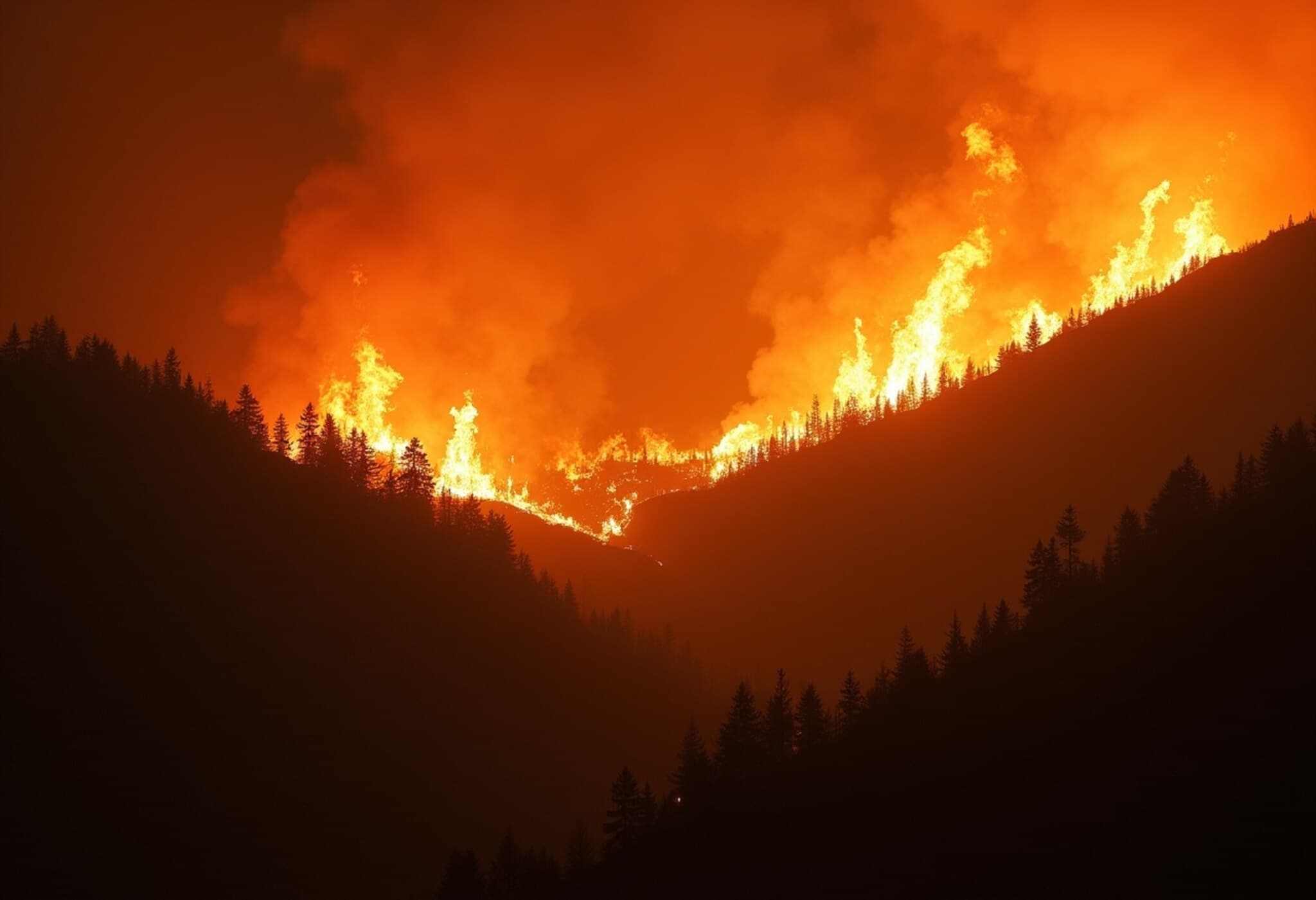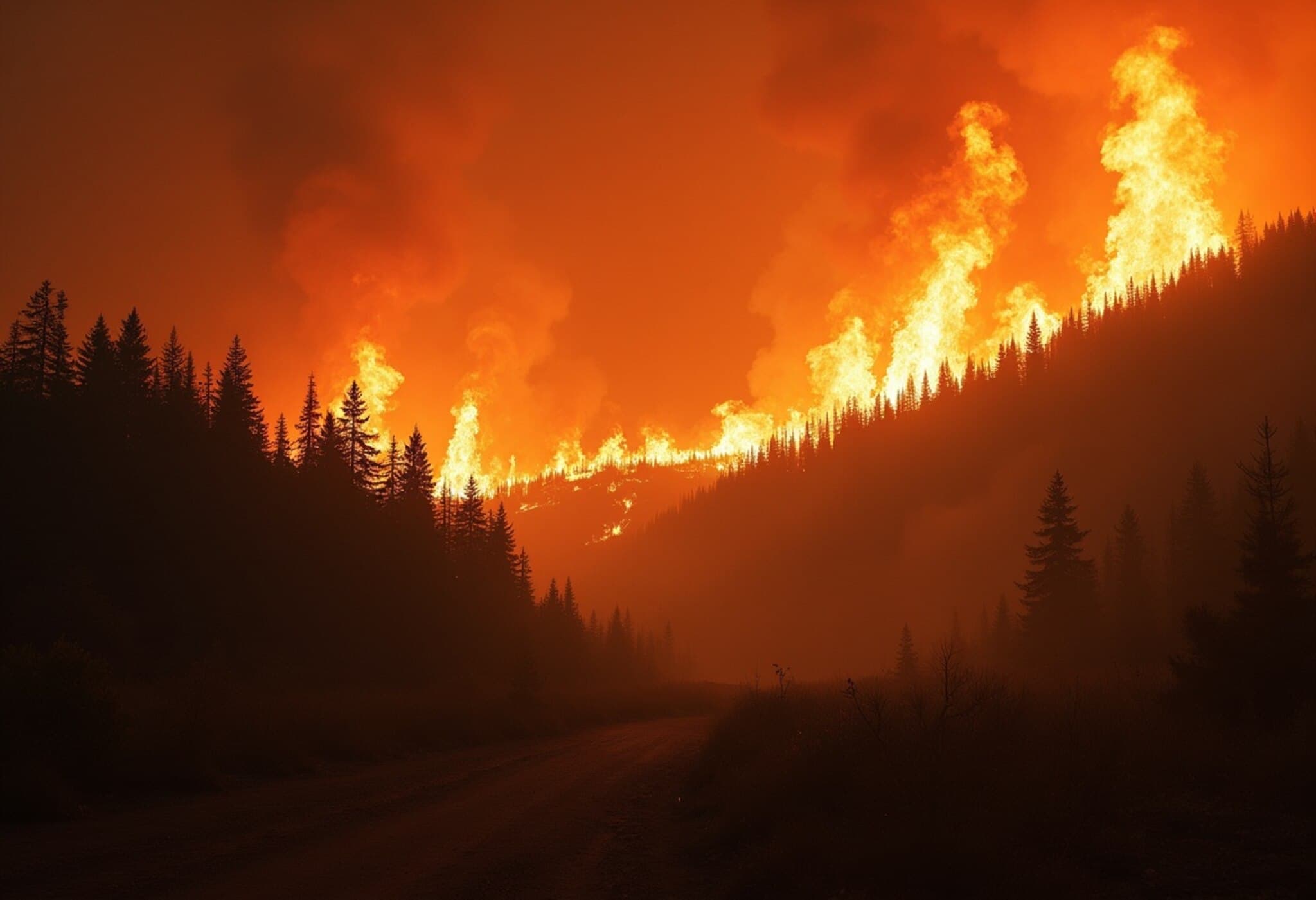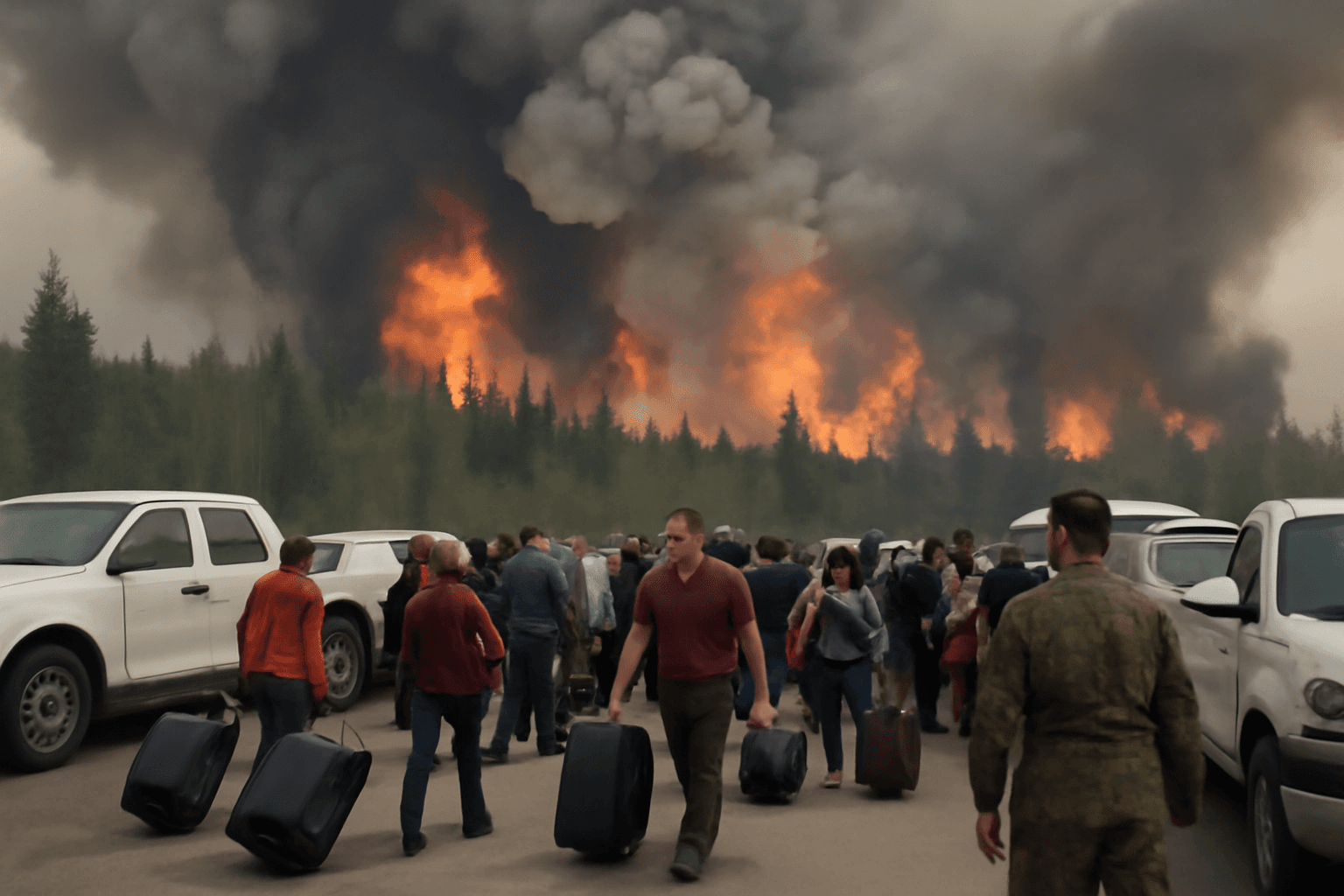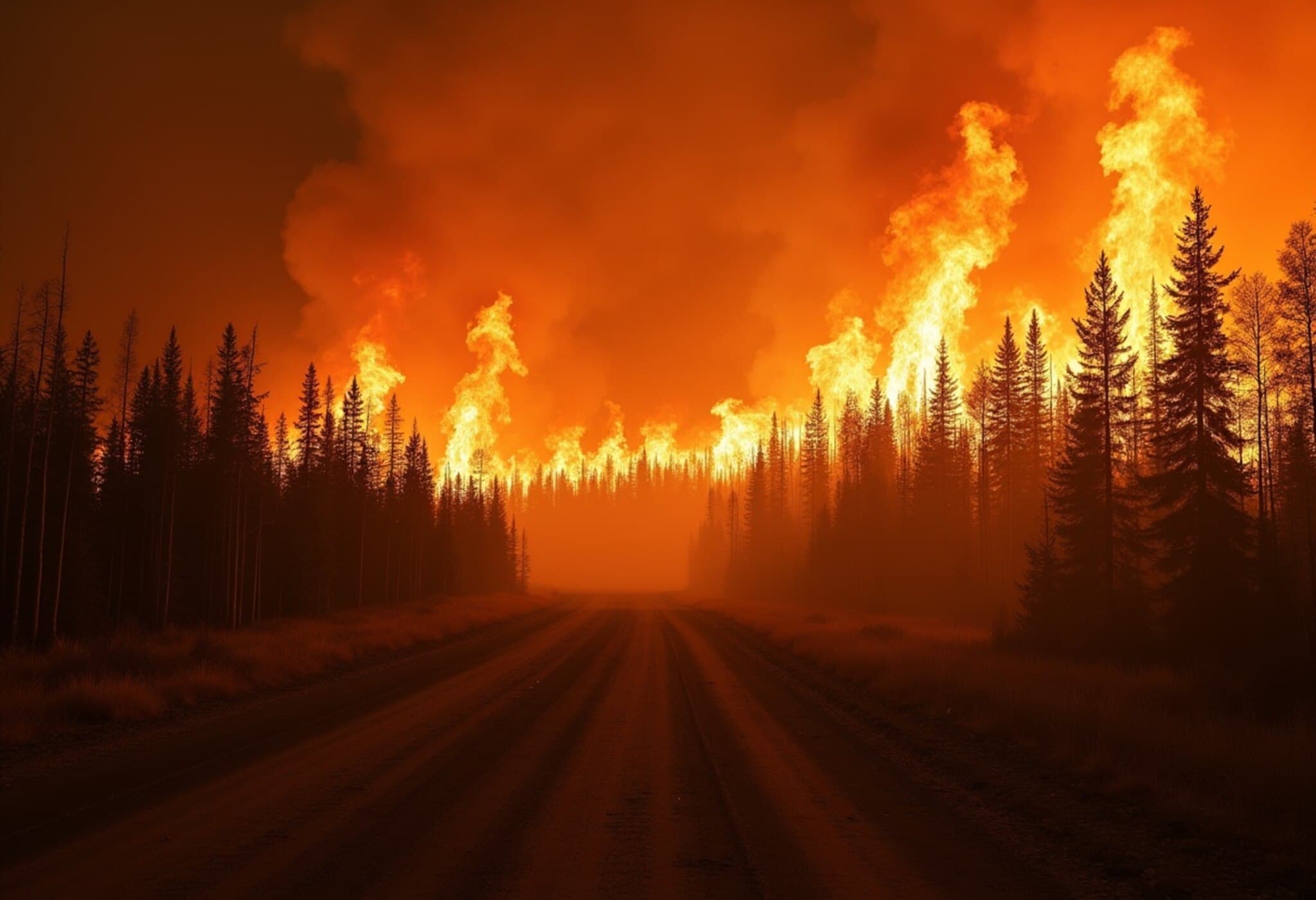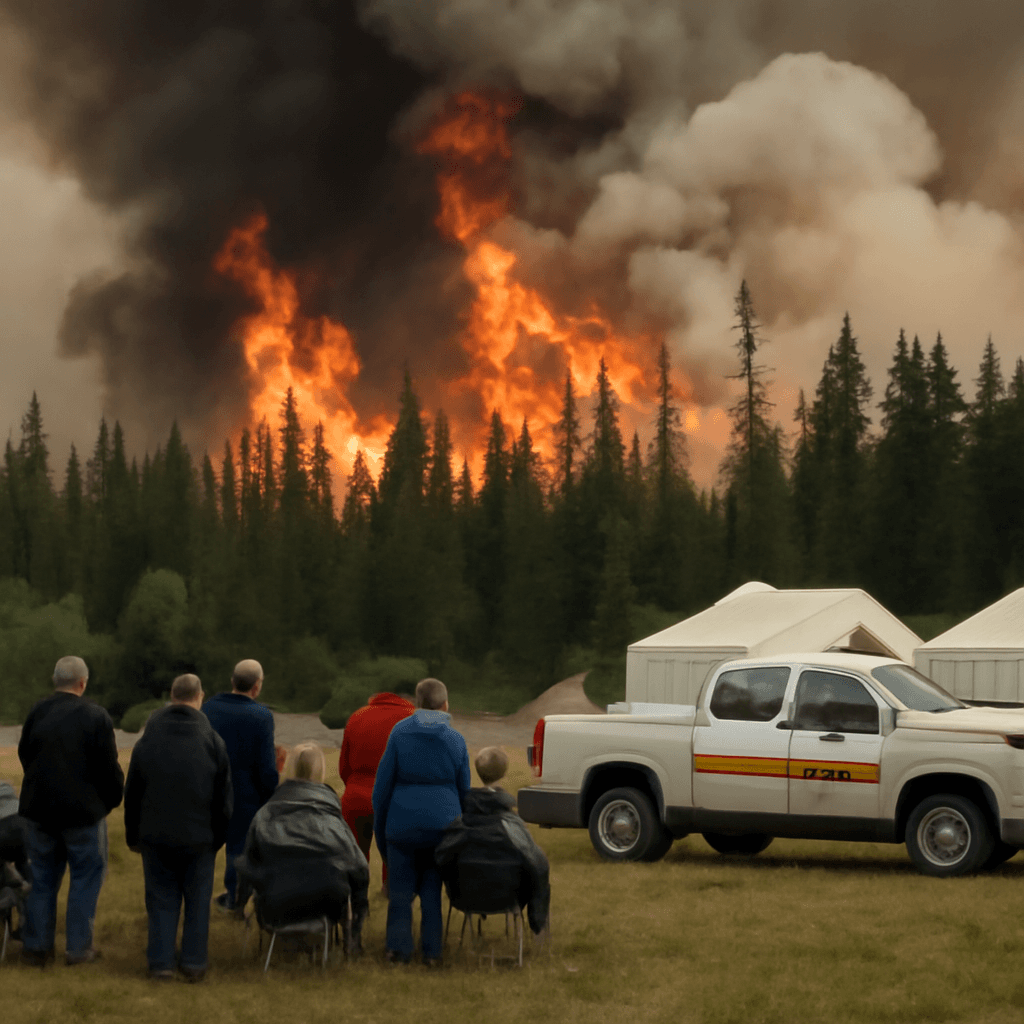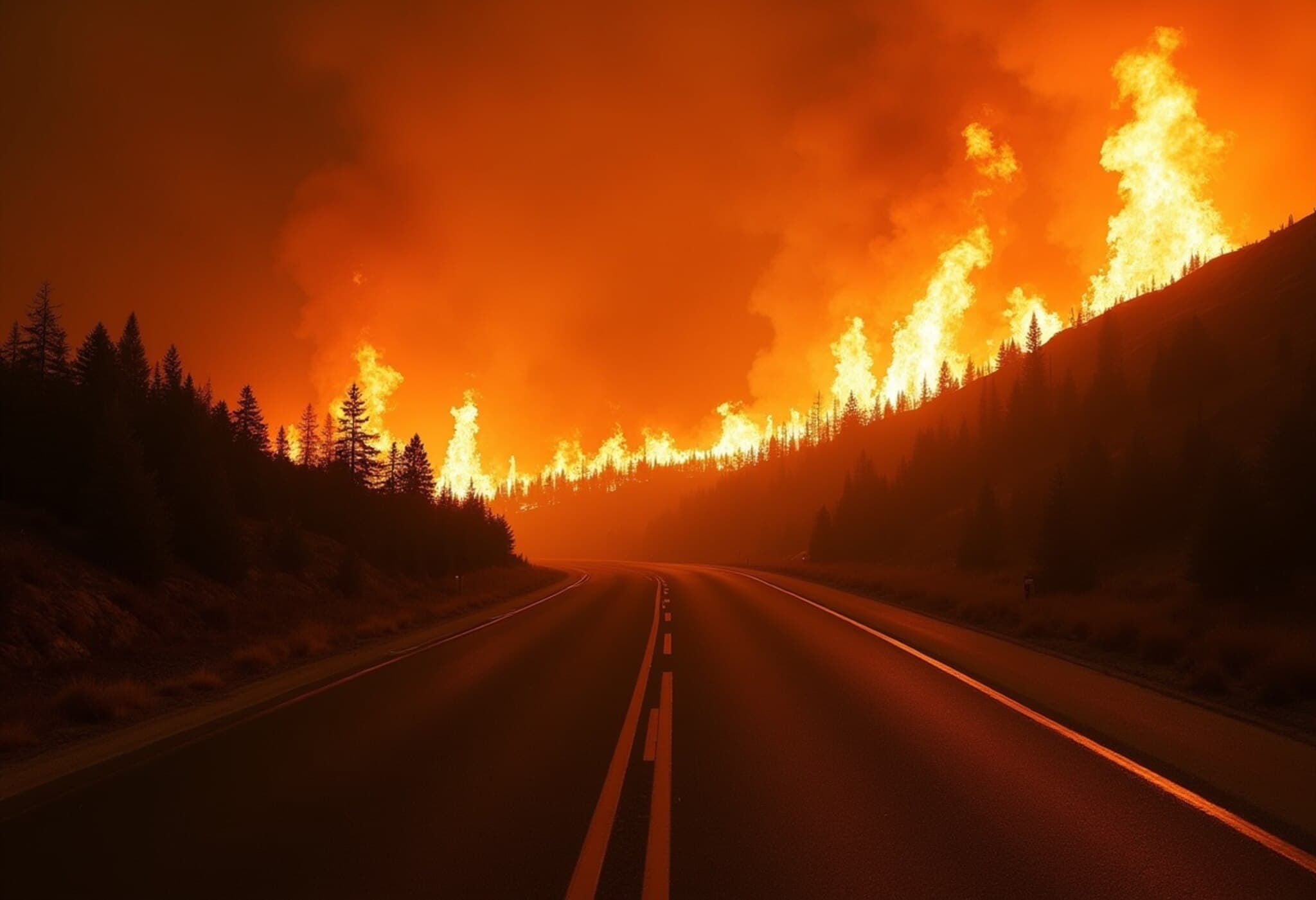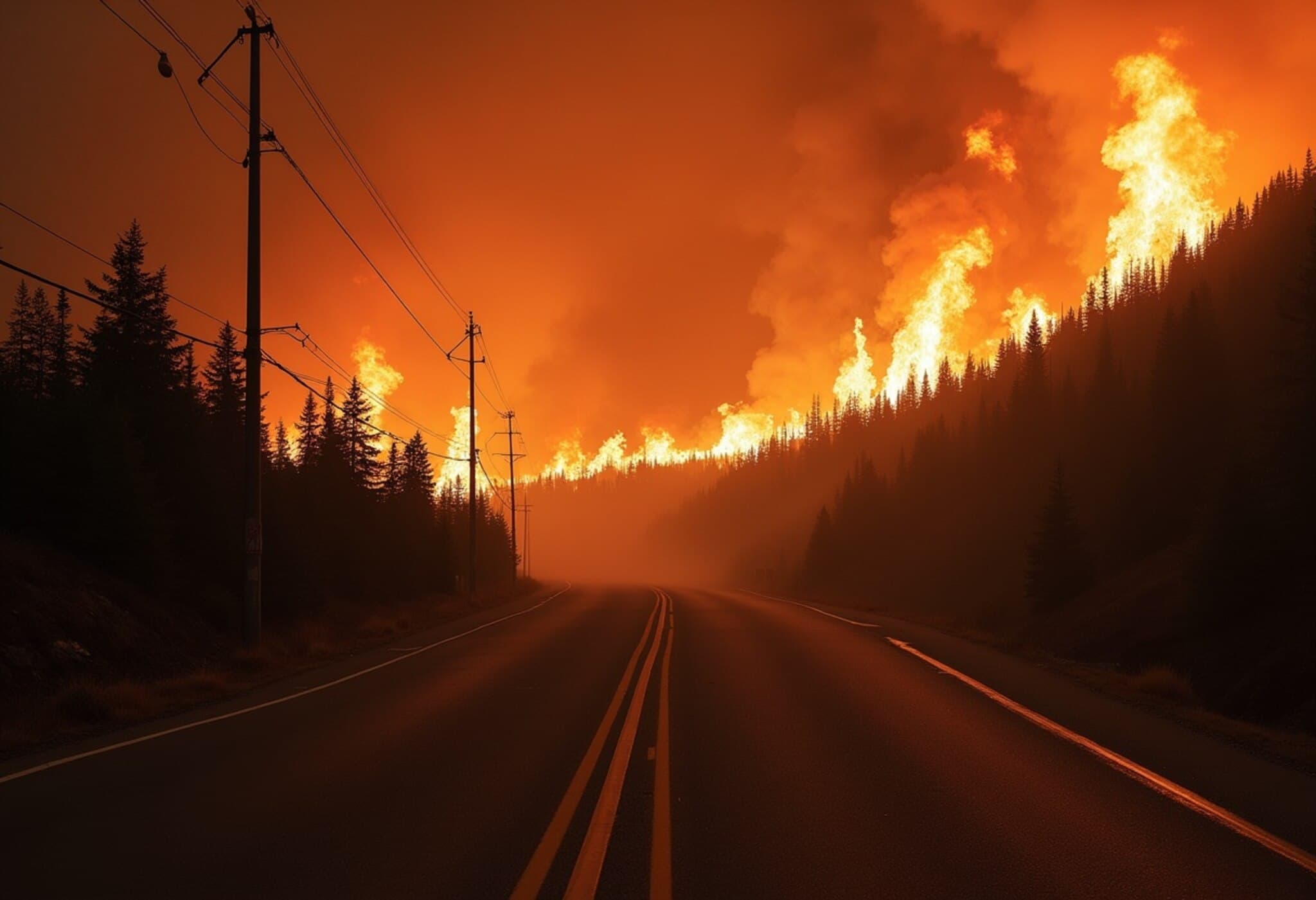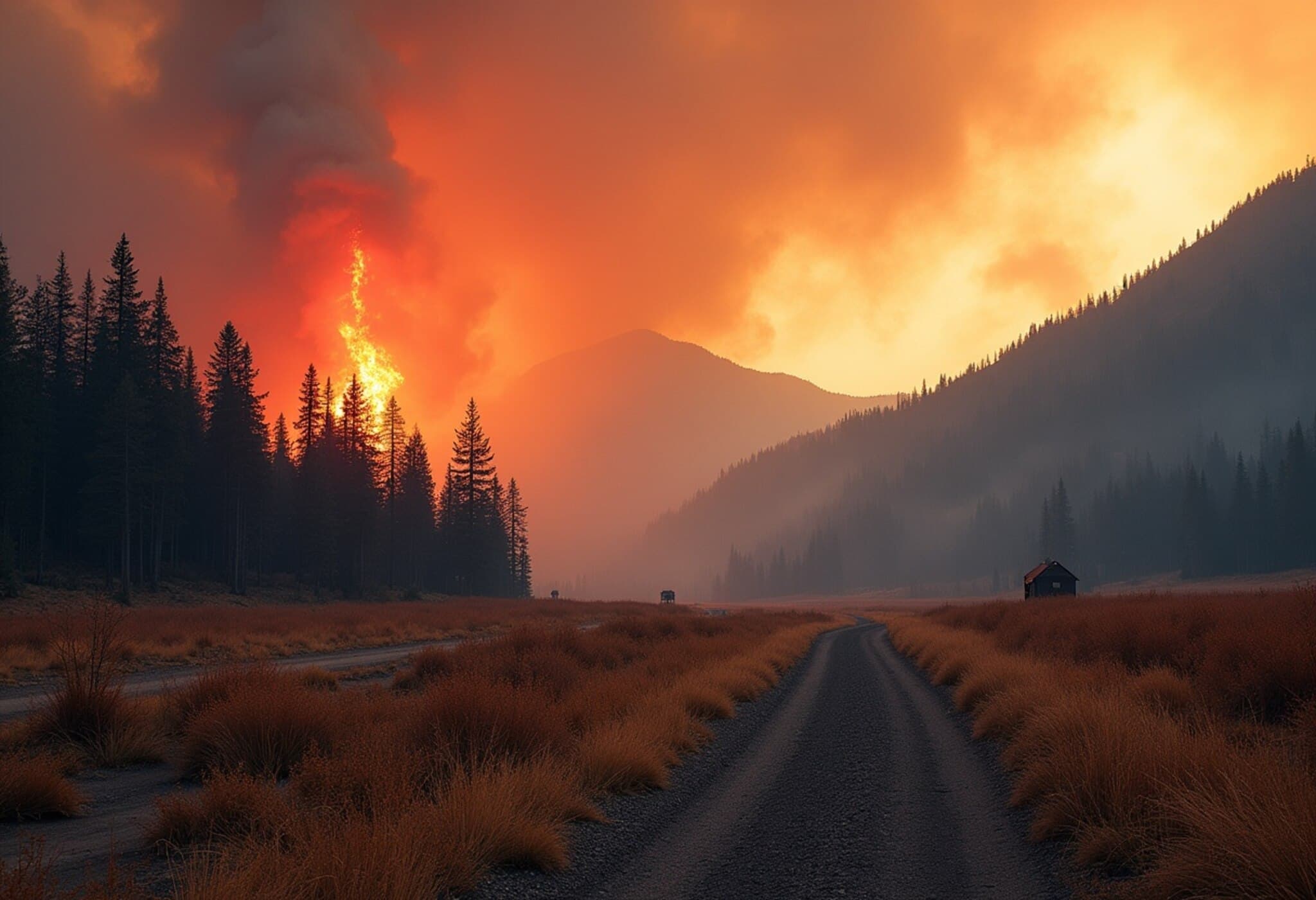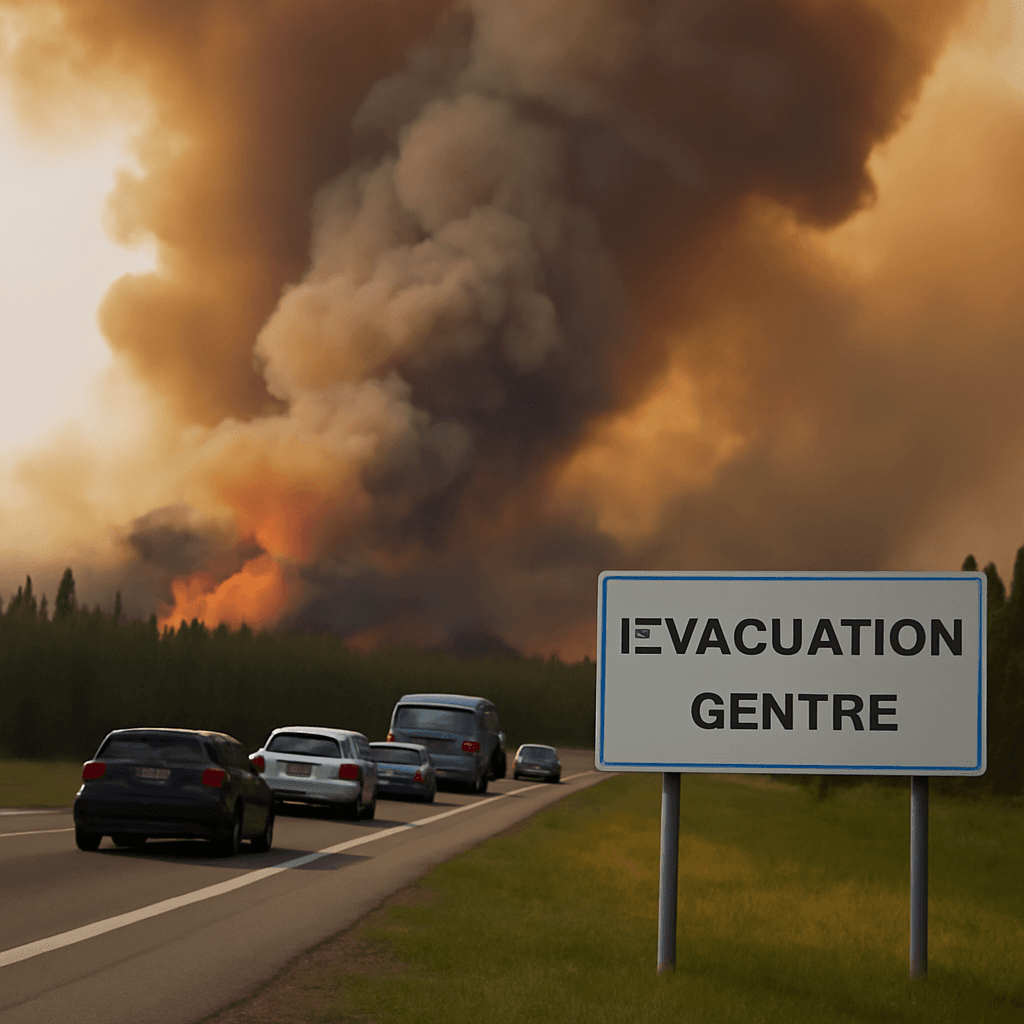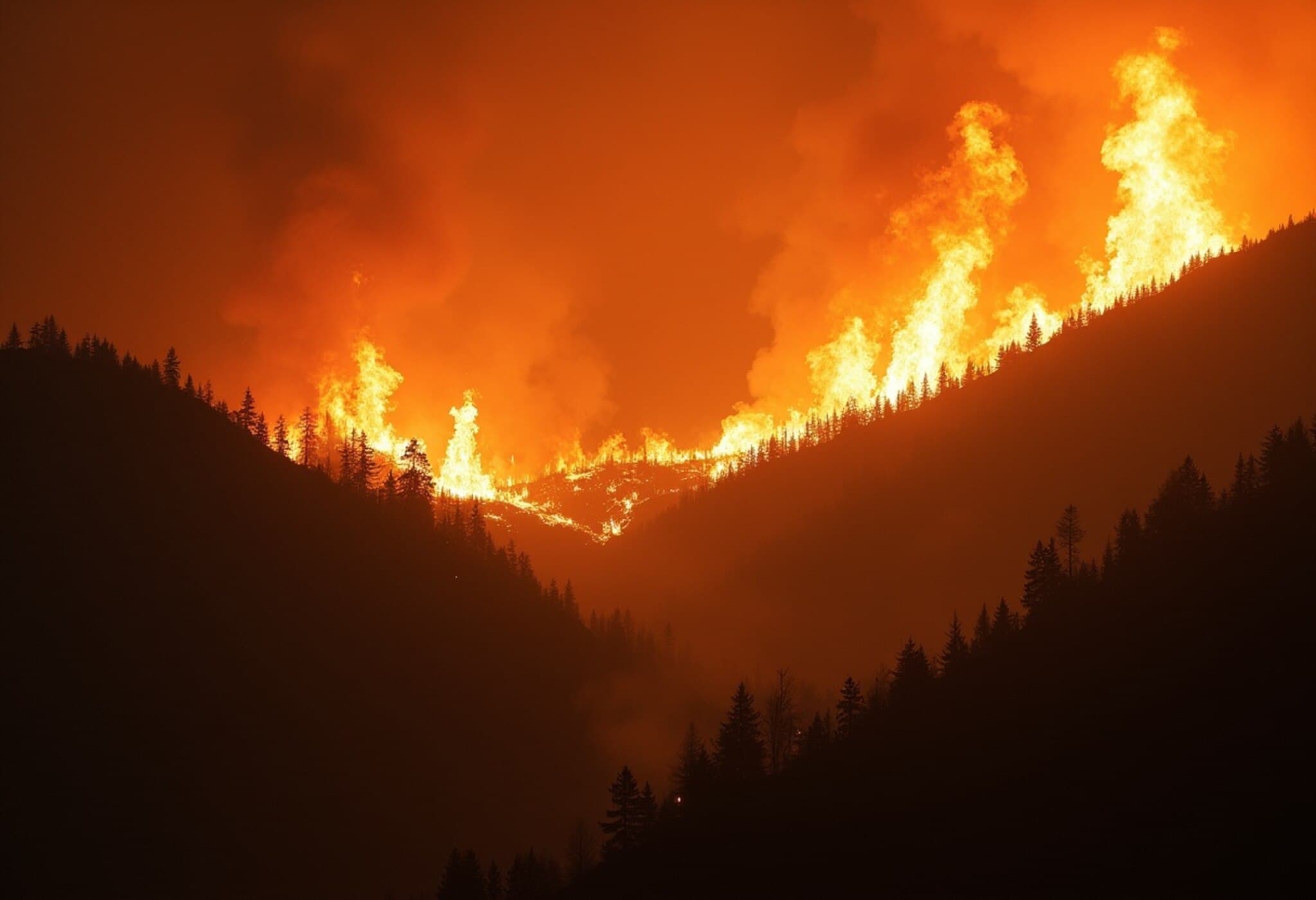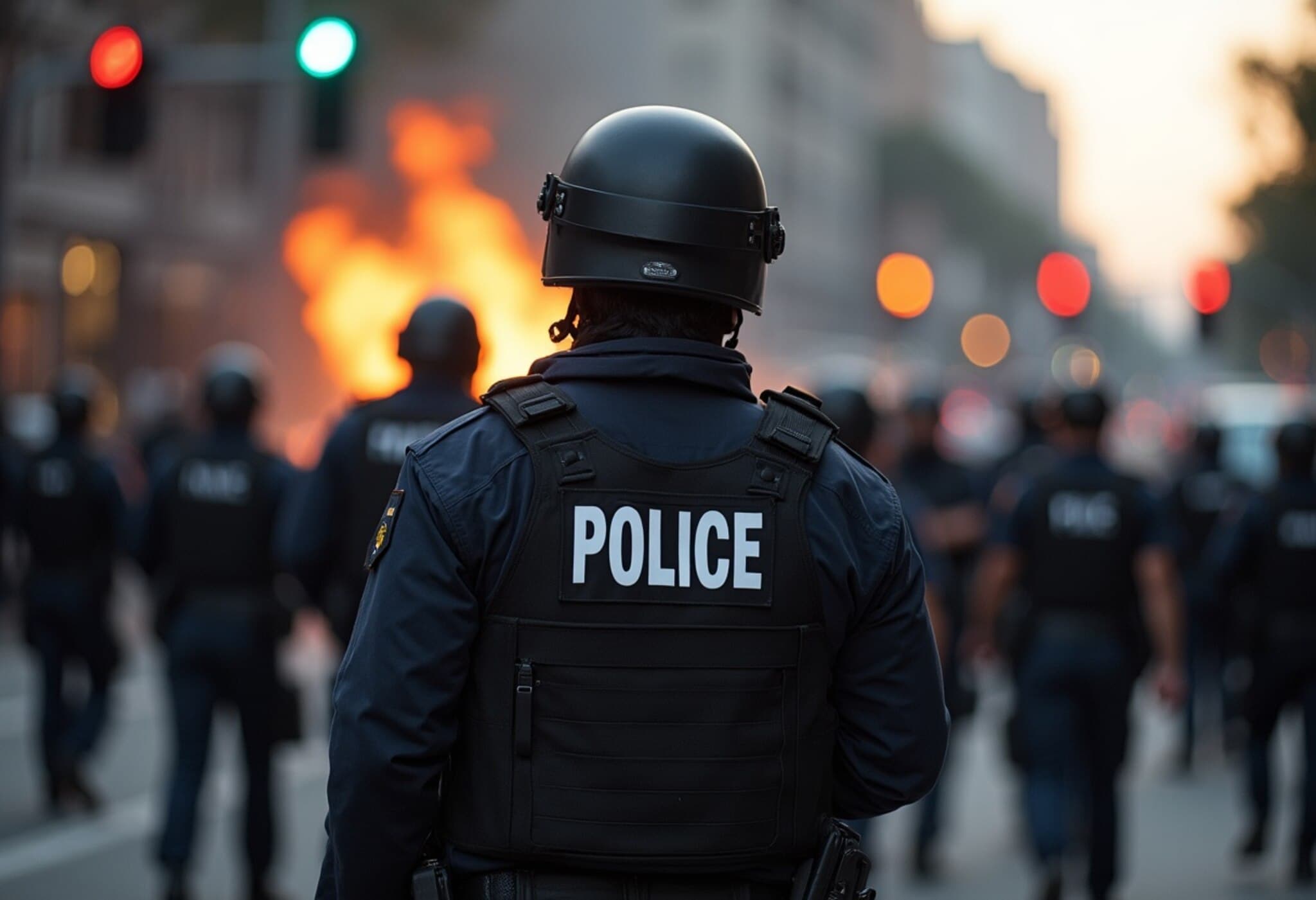Massive Canyon Fire Forces Large-Scale Evacuations in Southern California
Amid an intense summer heatwave, a rapidly spreading bushfire known as the Canyon Fire has prompted the evacuation of thousands in the regions north of Los Angeles. Beginning Thursday afternoon near Lake Piru, the fire has consumed nearly 5,000 acres across Ventura and Los Angeles counties and continues to advance eastward through parched brushlands and rural communities.
Emergency Response and Evacuation Measures
By late Friday morning, fire officials reported approximately 25% containment of the fire's perimeter. However, evacuation orders remain in effect for around 2,700 residents in Los Angeles County, while another 14,000 people live under an evacuation warning, underscoring the volatile and unpredictable nature of the blaze.
LA County Supervisor Kathryn Barger issued a firm call to action: "If first responders tell you to leave, go—without hesitation." She emphasized the extreme conditions, noting how "low humidity and soaring temperatures create a perilous environment where flames spread with frightening speed."
Current Firefighting Efforts and Challenges
Approximately 400 firefighters are battling the blaze, making cautious progress despite the challenges. While no fatalities have been reported, one firefighter sustained minor injuries and some outbuildings were lost. The fire’s rapid growth was fueled by persistent extreme heat, low humidity, and dry vegetation—factors that meteorologist Bryan Lewis attributes to the unprecedented intensity of the fire season. "These fires ignite and expand swiftly because everything is parched and hot," Lewis explained.
A Broader Context: California's Escalating Wildfire Crisis
The Canyon Fire strikes amid California's peak wildfire season, which is increasingly lengthening and intensifying due to climate change. Nearby, the massive Gifford Fire north of Santa Barbara continues to rage, having scorched over 100,000 acres, with roughly 15% containment and nearly 3,500 personnel on the front lines.
Southern California itself is still deeply scarred by the catastrophic wildfires earlier this year, notably the Palisades and Eaton fires, which destroyed thousands of buildings, killed 31 people, and caused damages estimated at $50 billion. The delayed discovery of human remains in Altadena in July serves as a grim reminder of the fires' enduring impact on local communities.
Climate Change and the Fire Season: Science Meets Reality
Recent research in the Science Advances journal underscores the role of human-induced climate change in shifting California’s wildfire season to start earlier—anywhere from six to 46 days sooner depending on the region. This trend not only lengthens the potential window for destructive fires but also heightens their severity due to warmer, drier conditions.
The combination of high temperatures, drought-stricken landscapes, and shifting wind patterns paints a sobering future for fire management in California. Policymakers face mounting pressure to invest in preventive measures, resilient infrastructure, and robust emergency systems as wildfires grow more frequent and ferocious.
What Residents Should Know
- Heed all evacuation orders promptly to ensure personal safety.
- Prepare emergency kits, including vital documents and supplies for quick departure.
- Stay updated with official sources for real-time information on fire containment and weather changes.
- Support community efforts and firefighting personnel combating the blaze under strenuous conditions.
Editor's Note
The Canyon Fire exemplifies the escalating wildfire risks faced by California’s communities amid a changing climate. Beyond the immediate dangers, these events challenge our preparedness and resilience infrastructure. Readers are encouraged to consider how local and federal policies can evolve to better address the complex interplay of environmental change, land management, and public safety. As the fire season intensifies, so does the imperative to find comprehensive, science-driven solutions that protect lives, homes, and ecosystems.
Reported by a seasoned correspondent specializing in North American environmental and policy affairs. This article integrates confirmed updates, meteorological context, and scientific research to deliver a nuanced understanding of ongoing wildfire events near Los Angeles.

